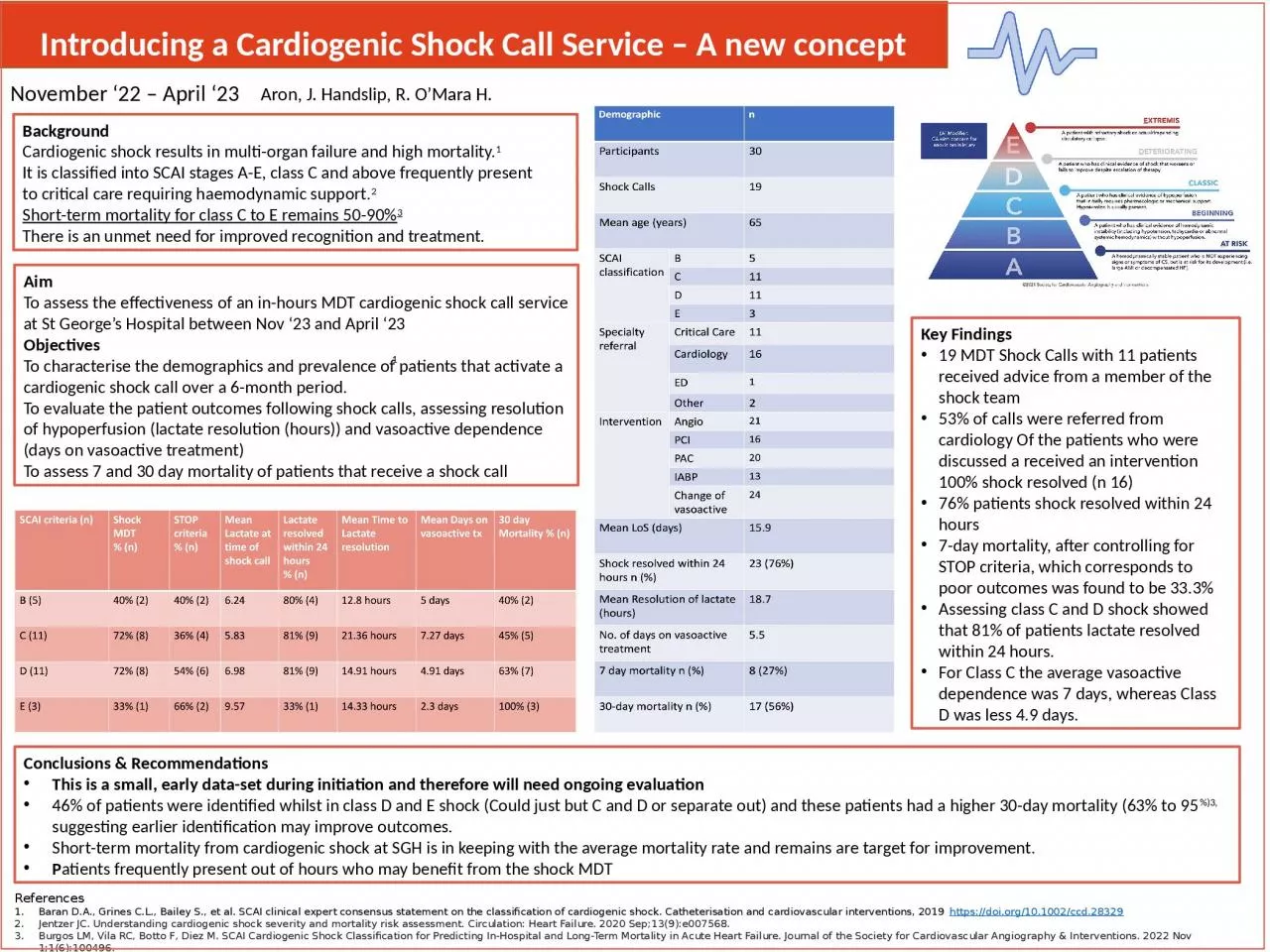

November 22 April 23 Aron J Handslip R OMara H Background Cardiogenic shock results in multiorgan failure and high mortality 1 It is classified into SCAI stages AE class C and above frequently present ID: 1014661
Download Presentation The PPT/PDF document "Introducing a Cardiogenic Shock Call Ser..." is the property of its rightful owner. Permission is granted to download and print the materials on this web site for personal, non-commercial use only, and to display it on your personal computer provided you do not modify the materials and that you retain all copyright notices contained in the materials. By downloading content from our website, you accept the terms of this agreement.
1. Introducing a Cardiogenic Shock Call Service – A new conceptNovember ‘22 – April ‘23Aron, J. Handslip, R. O’Mara H. BackgroundCardiogenic shock results in multi-organ failure and high mortality.1 It is classified into SCAI stages A-E, class C and above frequently presentto critical care requiring haemodynamic support.2Short-term mortality for class C to E remains 50-90%3There is an unmet need for improved recognition and treatment. ReferencesBaran D.A., Grines C.L., Bailey S., et al. SCAI clinical expert consensus statement on the classification of cardiogenic shock. Catheterisation and cardiovascular interventions, 2019 https://doi.org/10.1002/ccd.28329Jentzer JC. Understanding cardiogenic shock severity and mortality risk assessment. Circulation: Heart Failure. 2020 Sep;13(9):e007568.Burgos LM, Vila RC, Botto F, Diez M. SCAI Cardiogenic Shock Classification for Predicting In-Hospital and Long-Term Mortality in Acute Heart Failure. Journal of the Society for Cardiovascular Angiography & Interventions. 2022 Nov 1;1(6):100496.1AimTo assess the effectiveness of an in-hours MDT cardiogenic shock call service at St George’s Hospital between Nov ‘23 and April ‘23 ObjectivesTo characterise the demographics and prevalence of patients that activate a cardiogenic shock call over a 6-month period.To evaluate the patient outcomes following shock calls, assessing resolution of hypoperfusion (lactate resolution (hours)) and vasoactive dependence (days on vasoactive treatment)To assess 7 and 30 day mortality of patients that receive a shock call Conclusions & RecommendationsThis is a small, early data-set during initiation and therefore will need ongoing evaluation46% of patients were identified whilst in class D and E shock (Could just but C and D or separate out) and these patients had a higher 30-day mortality (63% to 95%)3, suggesting earlier identification may improve outcomes. Short-term mortality from cardiogenic shock at SGH is in keeping with the average mortality rate and remains are target for improvement.Patients frequently present out of hours who may benefit from the shock MDTKey Findings19 MDT Shock Calls with 11 patients received advice from a member of the shock team53% of calls were referred from cardiology Of the patients who were discussed a received an intervention 100% shock resolved (n 16)76% patients shock resolved within 24 hours7-day mortality, after controlling for STOP criteria, which corresponds to poor outcomes was found to be 33.3% Assessing class C and D shock showed that 81% of patients lactate resolved within 24 hours.For Class C the average vasoactive dependence was 7 days, whereas Class D was less 4.9 days.